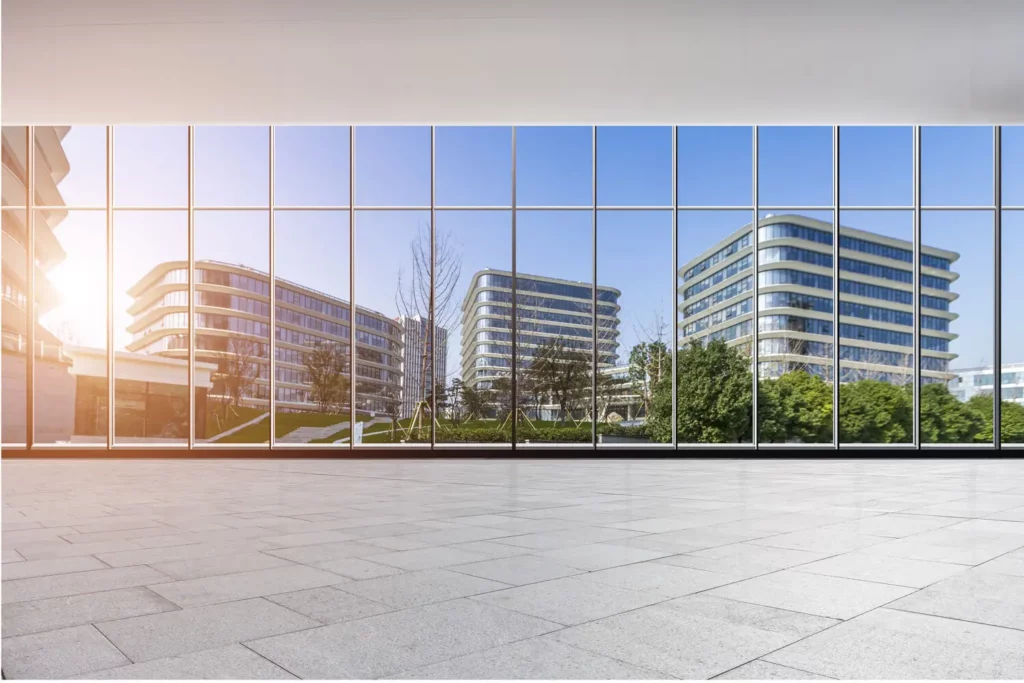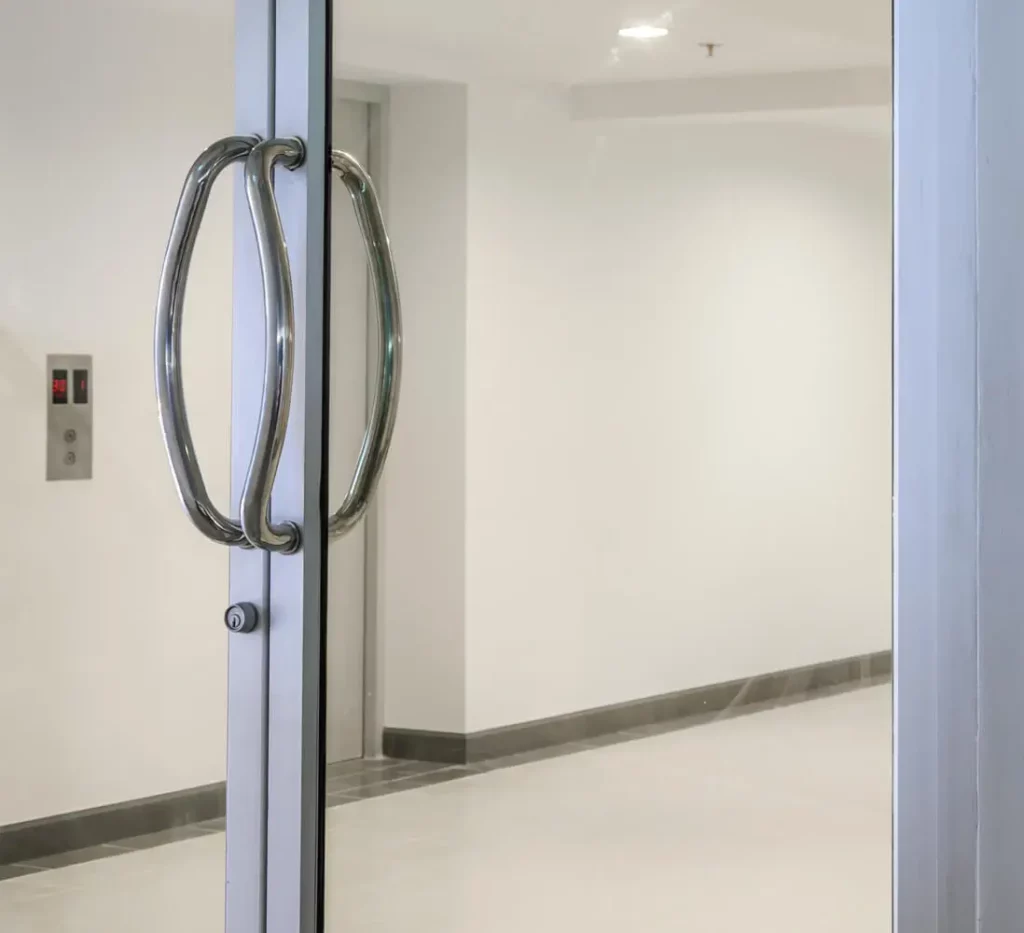Written By: Brad Campbell | August 11, 2023
Security by design in architecture refers to the practice of integrating security measures and considerations into the planning, design, and construction of buildings and infrastructure from the very beginning of architectural projects.
The primary goal of architectural security by design is to proactively address potential security risks and threats, ensuring that the built environment provides a safe and secure space for occupants, visitors, and assets.
One effective way to enhance security by design in a range of commercial architectural projects is through the strategic incorporation of security glazing.
By combining modern aesthetics with advanced impact-resistant glazing technology, security glazing protects against potential threats without compromising on the overall architectural design.

The concept of security by design emerged as a response to the increasing complexity and diversity of security challenges faced by modern commercial properties, especially those in more high-risk urban environments.
Traditionally, security measures have often been added to existing structures after identifying vulnerabilities or following security incidents. However, this reactive approach can be less effective and more costly in the long run.
Security by design, on the other hand, seeks to anticipate threats and implement measures to prevent security issues during the initial design stages of a building’s construction, thereby reducing the need for security upgrades down the road.
Architects and designers conduct thorough threat/risk assessments to identify potential security threats and vulnerabilities specific to the building or site. This includes evaluating factors such as location, local crime rates, environmental risks, and the building's intended use.
CPTED principles aim to influence the behavior of individuals by designing the physical environment in a way that deters criminal activity. Examples of such design elements include clear sightlines, proper lighting, landscaping that doesn't provide hiding spots, and controlled access points.

Integrating access control systems into architectural design allows for the regulation of entry and exit points, ensuring that only authorized personnel can access certain areas. This could involve electronic keycards, biometric scanners, and/or manned security checkpoints.
The design should enable natural surveillance, allowing occupants and security personnel to observe activities in and around the building. Clear sightlines and strategic positioning of windows contribute to enabling natural surveillance, and thus this is one area where security glazing particularly excels in improving architectural security by design.

In areas prone to terrorism or natural disasters, incorporating blast-resistant and impact-resistant materials become crucial components of security by design. Impact windows are one such material that can go a long way towards improving human safety and limiting property damage in such events.
Consideration should also be given to the integration of traditional security technology, such as CCTV cameras, intrusion detection systems, fire alarms, and access control systems, into the building's design.
Proper planning for emergency egress routes ensures a safe and efficient evacuation in case of a fire, natural disaster, or security incident.
Security glazing is a specialized form of glass or non-glass glazing that offers enhanced resistance to various physical threats, such as forced entry, ballistic impacts, explosions, and natural disasters.
Unlike standard commercial glass, which is usually annealed or tempered, security glazing typically consists of multiple layers of strengthened laminated glass, polycarbonates, acrylics, and other high-strength materials, bonded together with thermoplastic interlayers.
These interlayers provide exceptional strength and help prevent the glass from shattering upon impact, holding windows and doors in place even in the event that they do break due to accidental or intentional impacts.
One of the most significant advantages of security glazing is its ability to fortify buildings against criminal activity.
Whether it's a retail establishment, a governmental facility, or any other type of commercial property, security glazing acts as a formidable access denial barrier and deterrent against forced entry attempts, including those related to burglary, smash-and-grab theft, rioting and looting, and even active threats.
Forced entry attempts using hammers, pry bars, and other common burglary tools will just bounce off certain types of security glazing, creating a delay to forced entry that allows people inside to react, discourages would-be intruders, and gives the authorities time to arrive and deal with the threat.

Security glazing is not solely designed to address human threats. It also plays a vital role in mitigating the impact of natural disasters such as hurricanes, tornadoes, and earthquakes.
The multi-layered composition of security glazing helps maintain the integrity of the building envelope during extreme weather events, preventing the entry of debris and reducing the risk of injury to occupants.
In today's political and social climates, the potential for armed attacks is a reality that cannot be ignored when it comes to security by design.
Security glazing with ballistic resistance properties is an essential component in high-risk environments, such as government buildings, law enforcement facilities, and military bases.
Bullet-resistant security glazing is also becoming increasingly popular for certain types of high-risk businesses, including 24-hour convenience stores, jewelry stores, pawn shops, check cashing businesses, cannabis dispensaries, and other cash-handling and specialty retail businesses where armed robbery is a concern.

The ability of windows and doors to withstand ballistic impacts can make a life-saving difference during active shooter situations, providing precious time for occupants to seek safety and for the police to intervene and neutralize the threat.
Terrorist attacks involving explosives, as well as the risks of accidental explosions from things like gas leaks, have increased the need for blast-resistant materials as part of architectural security by design.
Security glazing with explosion-resistant properties acts as a critical line of defense against these threats.
By absorbing and dispersing the force of a nearby explosion, this specialized glazing can prevent window and door glass from shattering dangerously inwards, reducing the chances of injury and damage.
By integrating modern security measures during the early stages of commercial building design, architects can create buildings that not only meet contemporary design standards, but also provide a safe and secure space for everyone.
Implementing security glazing into architectural projects is an innovative and effective solution for improving architectural security by design.
Security glazing’s ability to provide enhanced physical security, mitigate natural hazards, and withstand ballistic impacts and explosions makes it an essential component in modern building design.
As security demands and technology continue to evolve, embracing security glazing is sure to play a pivotal role in shaping the future of architecture — a future where design and security go hand in hand.
At Riot Glass®, LLC, we offer a full range of security glazing solutions for both new construction and retrofit projects. Contact us today for a free consultation about incorporating Riot Glass into your next commercial building project.

HOW CAN WE HELP YOU?
